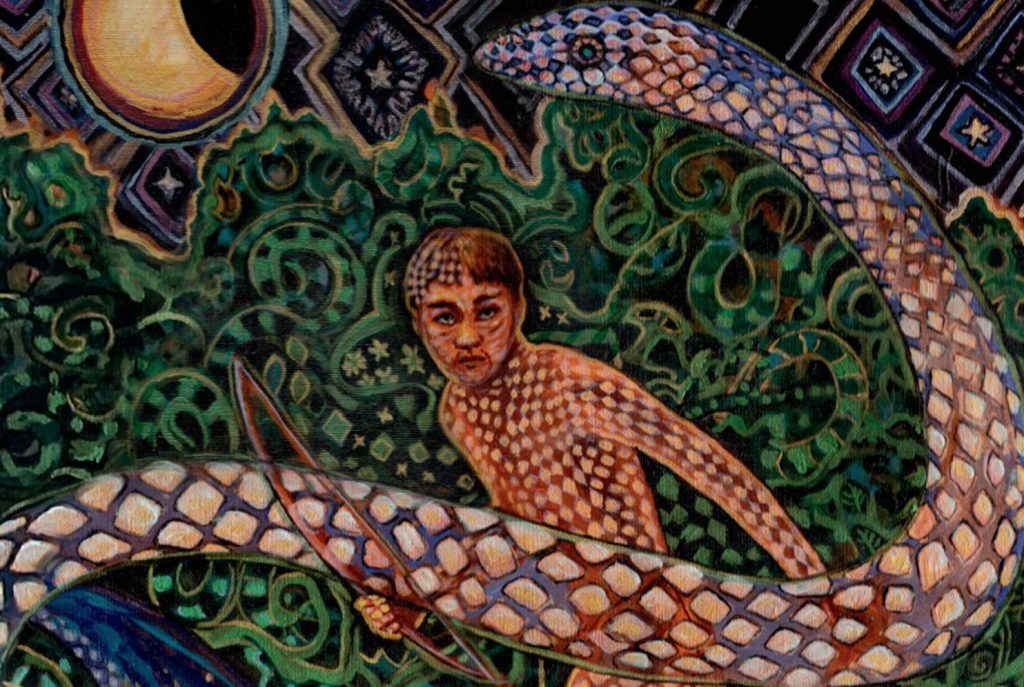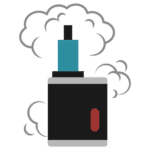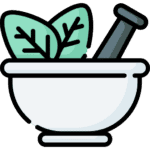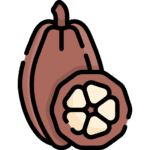Banisteriopsis Caapi - Traditional Use & Use in the Western World

Caapi - Traditional Use
Banisteriopsis caapi, also known as caapi or yagé, is a South American climbing plant of the Malpighiaceae family. Its decoction has a long history of entheogenic use. He is considered a "plant teacher" among the indigenous peoples of the Amazon rainforest.
The Piaroa are an ethnic group based in southern Venezuela. They use Banisteriopsis caapi (known as tuhuipä or capi) for various purposes. Unlike other Amazon societies, the Piaroa do not use Banisteriopsis caapi to make ayahuasca. Caapi is used in Piaroa society as:
- Hunger suppressant
- Stimulant
- Hunting aid (improving eyesight)
It is important to note that the antidepressant action of Banisteriopsis caapi and its widespread use throughout Piaroa society may have helped to promote and maintain their social stability.
On the other hand, the shamans of many indigenous tribes usually use Banisteriopsis caapi during ceremonies, both for therapeutic and ritual purposes. The shamans say that the use of Banisteriopsis caapi helps to enhance people's empathy by allowing them to give guidance to their communities.
In the Amazon rainforest, shamans (traditional healers, doctors / women) are sacred to tribal cultures. Shamans provide both physical and mental healing to humans by injecting and administering herbal remedies to sick people. These mystical figures go through years of "education". Shamanic initiations take years. They can be extremely burdensome for a person's body, mind and emotional world.
Initiations consist of isolation in the forest, away from all communication and the consequent ingestion of hundreds of different psychoactive plants. This procedure is intended to familiarize you with each of these herbs for future use in treating others. Many plants will be swallowed during the initiation and practice of a shaman, but none is more important than Banisteriopsis caapi.
Caapi & Traditional Ayahuasca
The most famous traditional use of Caapi takes place within Ayahuasca. Traditional Ayahuasca blends consist of Banisteriopsis Caapi and Psychotria Viridis (also known as Tsakrouna). Tsakrouna contains small concentrations of the powerful psychedelic substance DMT. Other plants containing DMT can be used instead of Tsakruna - eg Chaliponga, Mimosa Hostilis. Mimosa Hostilis appears to have the highest concentrations of DMT among other Amazon plants. In the Amazon, Caapi is boiled for hours in a large cauldron. In a second pot, shamans boil the plants that contain DMT. The Caapi mixture is then consumed first, followed by the ingestion of Tsakrouna, Mimosa Hostilis / other psychoactive plants.
If one tried to consume the mixture of a plant containing DMT individually, one would not feel anything (unless perhaps consuming large doses of Mimosa Hostilis but this practice is NOT RECOMMENDED). After swallowing it individually, DMT breaks down in the stomach within minutes. Unless Caapi is consumed 30-45 minutes before taking DMT. Then the substance remains in the human body for a few hours and let's say that magical experiences take place. Caapi contains alkaloids (harmala / harmala alkaloids) that allow significantly slower breakdown of DMT by the human body.
Most Amazon tribes use Caapi / plant mixtures with DMT. Some breeds choose to use Caapi individually in large doses (100-200 grams). These doses appear to exhibit psychedelic effects (significantly less intense than traditional Ayahuasca, however remarkably psychoactive) and lead to therapeutic experiences.
Amazon shamans boil Caapi for at least 9-12 hours before deciding that the mixture is ready. The traditional preparation of the plant is as follows:
1. The woody plant material (vine) is placed in a small cauldron. ~ 5 liters of water / 100 grams of Caapi Vine and a small amount of vinegar / lemon juice are used to reduce the pH of the water. The pH of the water should be slightly acidic because Caapi contains alkaloids that have an alkaline pH.
2. The vegetable material is allowed to boil for. 3 hours.
3. After 3 hours, strain the mixture. The amount of water will have decreased. The liquid is kept in a large bottle. The plant material is placed again in the cauldron and covered with 5 new liters of water.
4. The process in steps 1-3 is repeated 2-3 times.
5. At the end of 3-4 boils with a total duration of 9-12 hours, the vegetable material is discarded and the liquids from the boils are poured all together in the cauldron. The liquid is boiled again until the volume of water is reduced to ~ 500 ml.
6. Caapi mixture is consumed either alone or in combination with plant mixtures containing DMT.
Use in the Western World
Consumption of Caapi and Ayahuasca is "trending" in recent years in the Western world. The antidepressant, psychoactive and mystical properties and effects of the plant are gaining more and more people. For this reason, people who claim to have helped themselves and others through contact with the plant have devised different ways of using it. Some people choose to prepare Caapi traditionally as described above. Others use custom methods (see Herbal Percolator) and others choose to avoid the relatively tedious process of preparing the plant by buying liquid or solid extracts such as those you can buy from our store:
Frequency of taking Caapi: People who choose to use raw Caapi Vine in "full" psychoactive doses of 50-150 grams apply this practice 1-2 times a month. Other people choose mini-dosing or microdosing practices by taking the plant more often (every 2-3 days or more often). *
At this point we will briefly mention the different methods of use in the Western World:
1. Traditional boiling of Caapi Vine. See "Caapi & Traditional Ayahuasca". This method can be time consuming. Caution is required when reducing water (see step 5 above). You do not want to forget the kitchen stove open for hours and evaporate all the water of the mixture! In a modern kitchen, boiling the vegetable material is best done on medium heat to reduce the possibility of excessive water evaporation. To fully feel the psychoactive effects of raw Caapi Vine, one should consume 50-100 + grams of raw plant material. There is no standard dosage recommendation for many reasons. Different herbal mixtures will contain different concentrations of active substances. Each person's metabolism, duration of preparation and other factors do not allow us to clearly define a universal dosage of raw Caapi Vine.
2. Herbal Percolator (https://wiki.dmt-nexus.me/The_Herbal_Percolator). The percolation method is a very simple and effective way to make tea from herbal ingredients such as Caapi and Mimosa. The basic principle of the filter column is similar to the way most people make their coffee and does not require cooking. The filtration method was first tested in caapi, where the results were excellent, even more so than in the normal 3 x 3 hour cooking method (see "Caapi & Traditional Ayahuasca"). This method was developed by Dagger, a member of the DMT Nexus botanical forum. In this article we are not going to tell you in detail about the Herbal Percolator method. You can follow the Link to see it in detail.
3.Mini-Dosing: The practice of mini-dosing is based on taking 15-25 grams of Caapi. The raw Caapi Vine can be prepared by the boiling method or by the Herbal Percolator method. It is recommended to prepare a larger quantity (100+ grams) so that you do not have to go through the tedious preparation process every now and then. How do you calculate if you will receive eg 20 grams? Suppose that the mixture of 100 grams of raw Caapi Vine has been reduced to 500 ml by the method of boiling or by the method of Herbal Percolator. If you consume 100 ml of the liquid, you will have received the equivalent of ~ 20 grams of Caapi Vine. Smaller doses exhibit antidepressant effects and lead to a beautiful, meditative mindset. They also combine nicely with other plants such as Asvaganda, Cannabis, hemp oils, Damiana, Blue Lotus, Amanitis, Honeysuckle etc. It is good to keep in mind that depending on the content of plant material and other factors, 20+ grams can become more pronounced than you would like!
4.Microdosing: Use 5-10 grams of raw Caapi Vine. You can use the Toss n Wash method. Weigh the amount of plant material, place it on a spoon and put it in your mouth. You lower it with water. Alternatively you can make capsules that you will use during the day: http://ethosherbals.com/shop/smartshop/the-capsule-machine-00/ . Another method that can be used with mini-dosing: Mix the amount of Caapi you want with organic milk, almond or coconut milk, a small amount of Cacao powder and a little honey (optional). You can use a blender or just mix well and place the mixture in a saucepan. Heat in the kitchen and consume. Caution: do not strain the mixture! The goal is to "download" Caapi more deliciously!
5.Extracts: Extracts are the most practical and convenient way to use this wonderful plant. They do not require long hours of boiling or the removal of relatively large amounts of liquids. Just a few grams or ml can easily and with relatively high accuracy bring the desired effects. Fresh Caapi shoots are commonly used to create them.
The label accompanying an extract (eg 20x, 30 x) refers to the amount of fresh plant material used to make one kilogram or one liter of extract. For example for a 30 x extract, mass 1 kg or volume 1 liter, 30 kg of fresh Caapi (Caapi Vine) shoots have been used. At this point it is very important to clarify that the equivalent of dry shoots is about half. So in a 30x extract, mass 1 kg or volume 1 liter, will be equivalent to ~ 15 kg of dry shoots Caapi (Caapi Vine).
Let us refer in a little more detail to the extracts that we currently provide to you in our E-shop:
5A. Caapi Achuar Extract 30x (Caapi Achuar 30x ): One kilo of the extract is produced by boiling 30 kilos of fresh Caapi Ourinhos shoots (equivalent to ~ 15-17 kilos of dry shoots). So each gram equals ~ 15-17 grams of dried Caapi shoots. Therefore, to experience the "full" effects of Caapi from this extract, one would need ~ 5-7 + grams. If he wanted to do mini-dosing he would use 1-2 grams and if he wanted to do microdosing he would use ~ 0.5 gram.
5B. Caapi Resin 15x ( Caapi Resin 15x): One gram of the extract equals 15 grams of fresh shoots of the plant (~ 7.5 - 9 grams of dry plant material). Therefore, to experience the "full" effects of Caapi from this extract, one would need ~ 10-14 + grams. If he wanted to do mini-dosing he would use 2-4 grams and if he wanted to do microdosing he would use ~ 1 gram.
5C.Caapi Ourinho 20x (Caapi Ourinho 20x ): One liter of it is produced by boiling 20 kg of fresh shoots of Caapi Ourinhos (the equivalent of ~ 10-12 kg of dry shoots). One (1) ml of the extract equals ~ 10 grams of dried Caapi (Caapi Vine) shoots. Therefore, to experience the "full" effects of Caapi from this extract, one would need ~ 7.5-10 + ml. If he wanted to do mini-dosing he would use 2-3 ml and if he wanted to do microdosing he would use ~ 1 ml.
It is important to have a precision balance to use solid Caapi extracts:
Or have pipettes to use Liquid Caapi extracts:
- Very important: People taking medication (especially antidepressants, stimulants or medicines for hypertension / other medications) avoid "full" psychoactive doses. Caapi contains alkaloids that act as Monoamine Oxidase Inhibitors (MAO-Inhibitors). Concomitant use of MAO-Inhibitors and antidepressants, stimulants, and other medications can lead to potentially dangerous or even fatal health conditions.





 Ethos Herbals Blends
Ethos Herbals Blends Cannabis
Cannabis SmartShop
SmartShop VapeShop
VapeShop Medicinal Herbs
Medicinal Herbs Cacao & Tea
Cacao & Tea Aromatherapy
Aromatherapy Ethos Lifestyle
Ethos Lifestyle